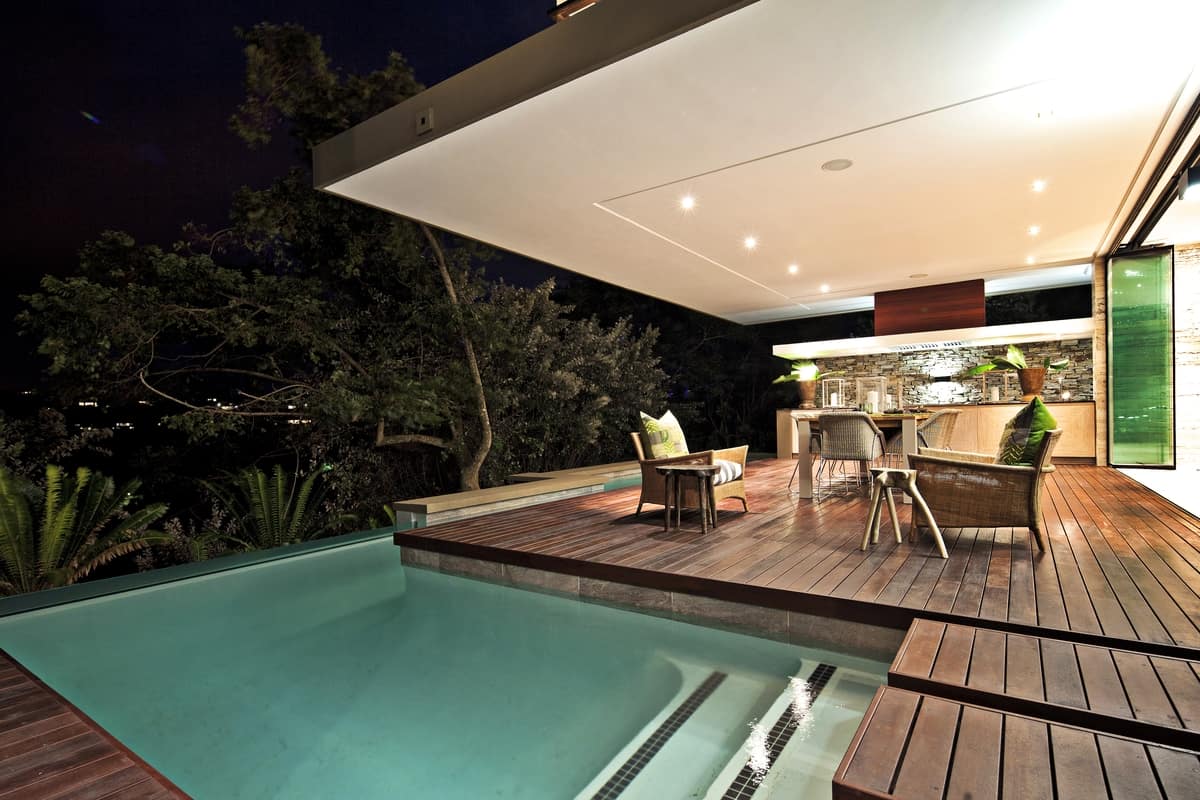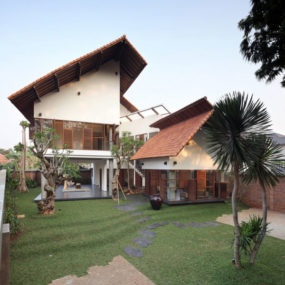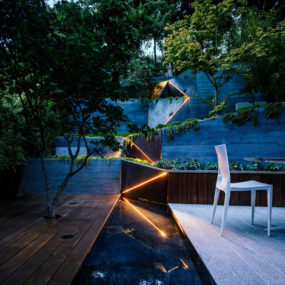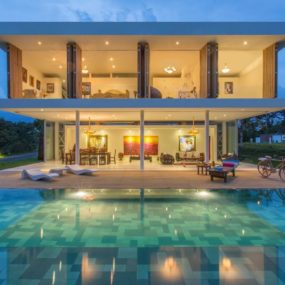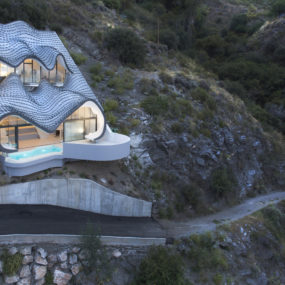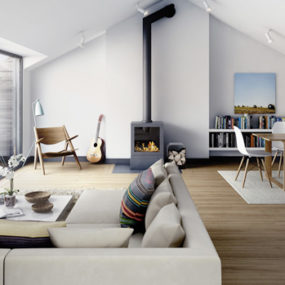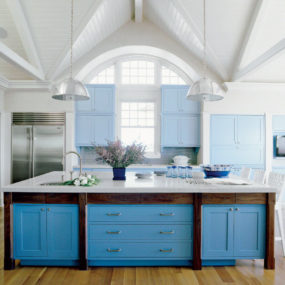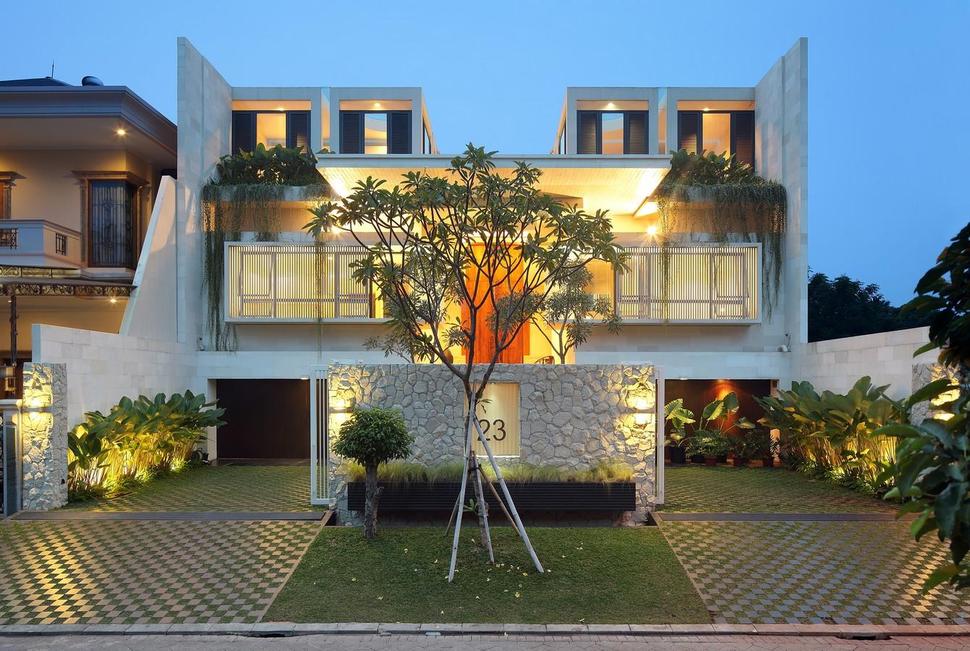
Located in the sprawling capital city of Jakarta, this luxurious residence makes the most of a relatively small lot. Designed by Tonny Wirawan Suriajaja & Partners, the house aims to integrate nature with daily life, even in an urban environment. To that end, the layout of the dwelling is open and interconnected, with wide hallways and an abundance of natural light sources. Public rooms take up most of the main floor, which is sectioned into three distinct areas. An indoor-outdoor courtyard at the level’s center includes a grassy lawn, and provides a view upward to the open-air top floor. All the guest bedrooms and the home’s master suite are situated around bridge-like walkways at the top of the building, with streams of water flowing around them.
Inside, each area of the residence has its own individual personality befitting its purpose. The main floor rooms near the entrance are bright and inviting, used as public spaces for hosting guests and doing daily activities. The rear of that level includes children’s rooms, each with its own unique color palette. On top, the master suite is physically spacious, but kept visually intimate by deep red colors and dark wood patterns throughout. Glass panels used as walls throughout maintain a free-flowing feel throughout the house, while subtleties of its design make clear which spaces are public and which are private.

The home’s architecture is an enticing mixture of concrete-based Fifties modernism, traditional courtyard layout emphasizing a connection to nature, and contemporary open-plan luxury. Every aspect is detailed and layered, from the grassy checker pattern of the driveway to the hanging vines which break up large front windows.
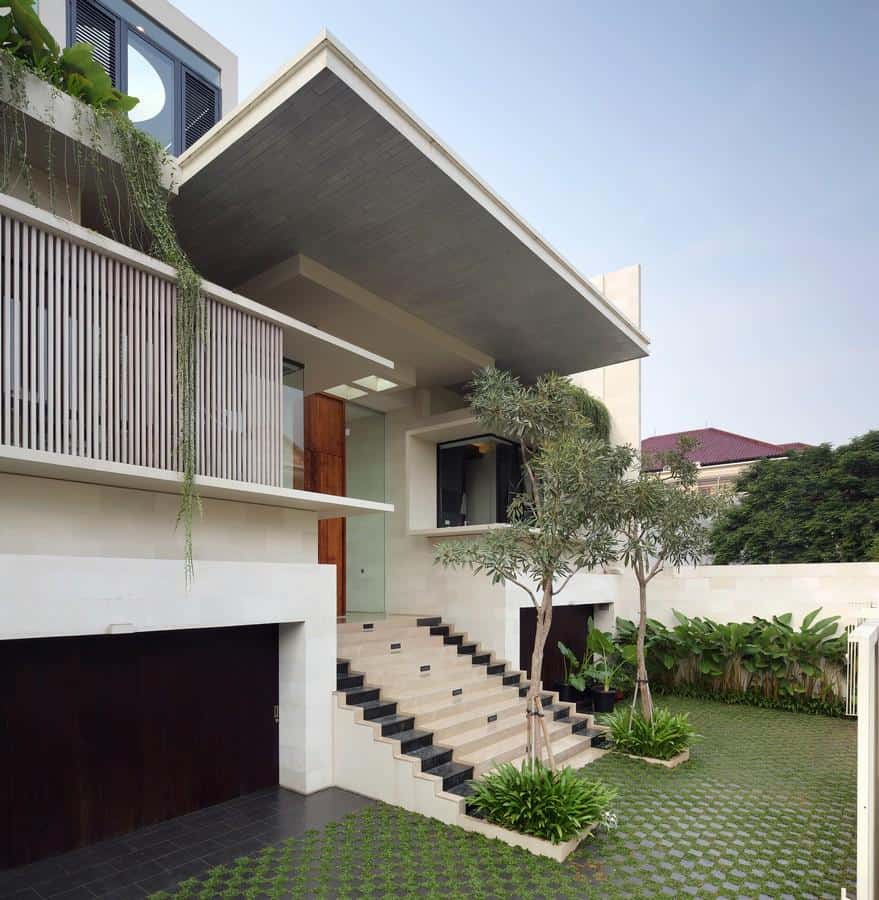
The front entrance, set behind a privacy wall on the side of the street, is a ceremonial yet peaceful affair. An overhang above the home’s main level provides borders under which two trees frame a square set of front steps.
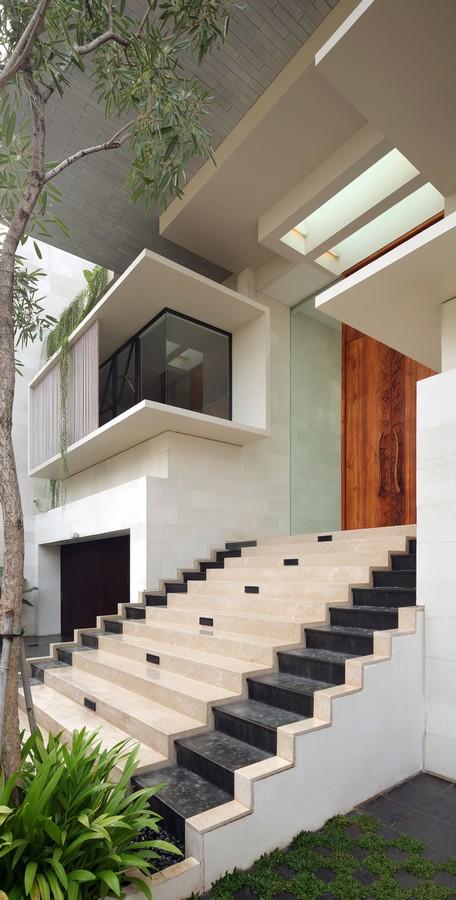
The steps themselves having matching waterfalls cascading downward on each edge, creating another natural touch within the largely right-angled architecture of the dwelling.
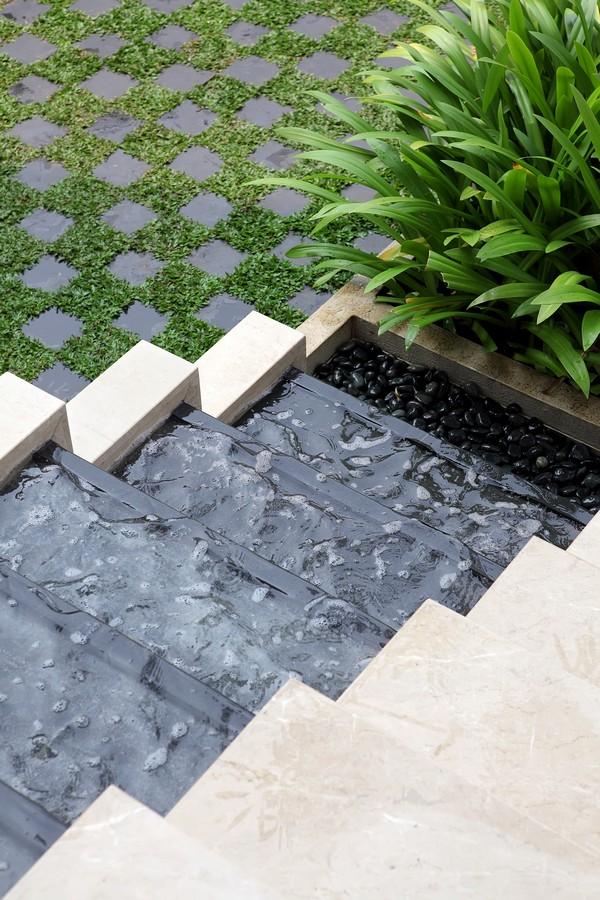
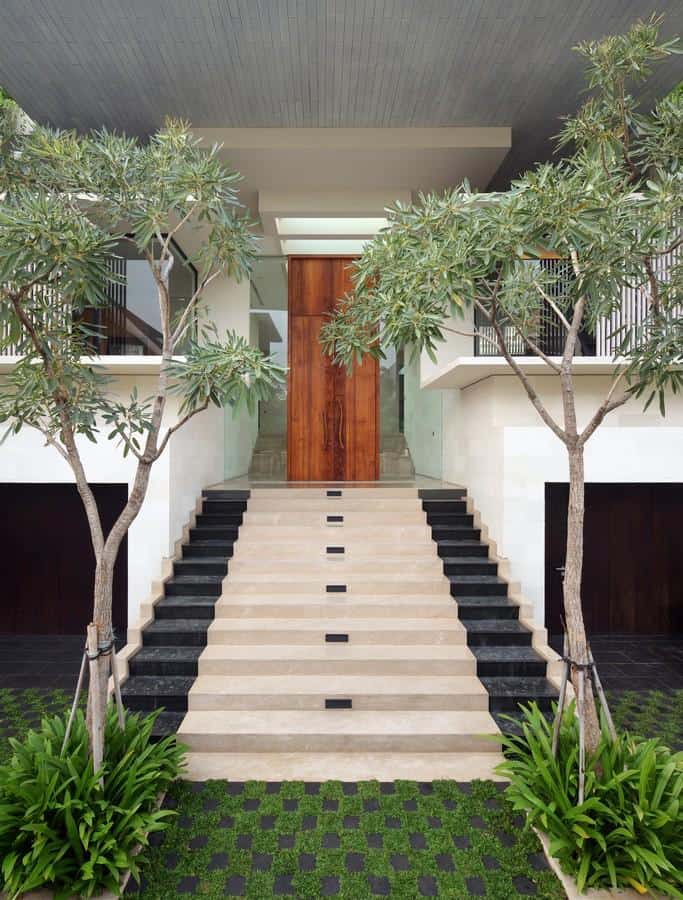
Glass is used throughout the house to create walls without fully separating each space. Here, a layer of glass around the front door gives a sightline out to the street even from the rear of the dwelling.

Inside, an entry foyer and another flight of steps brings even more formality and drama to the act of stepping inside. Along the ceiling, a row of skylights provides natural direction to one’s movement once indoors.
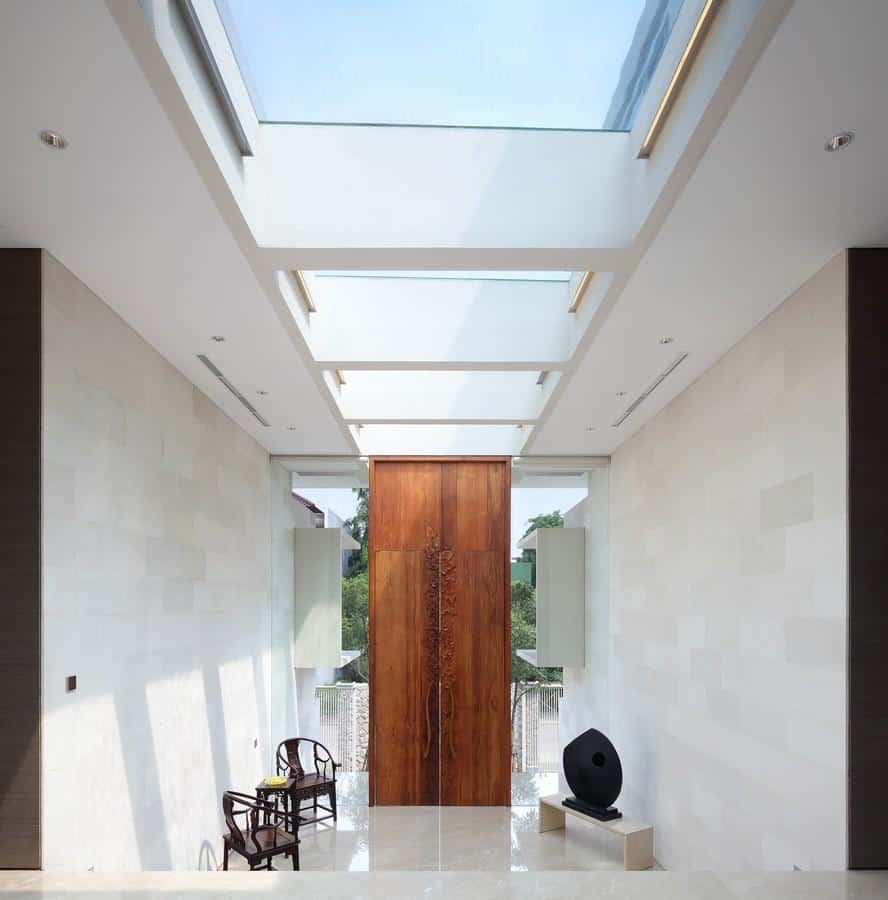
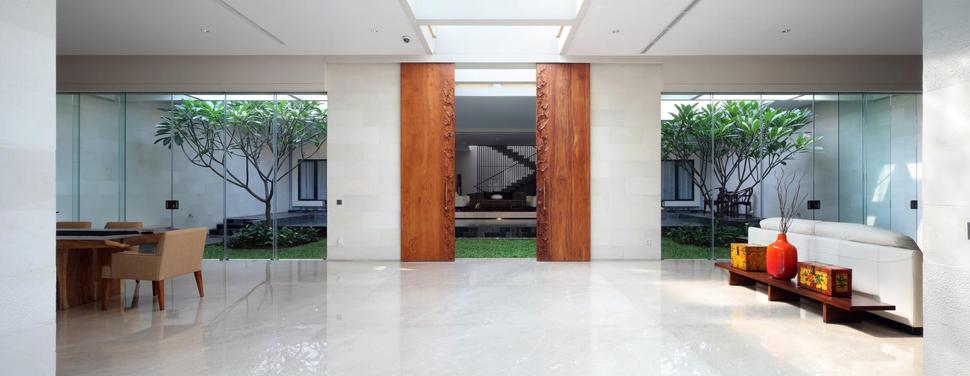
The main floor consists of three principal areas, each separated by a layer of glass panels and a change in decor. Just behind the entrance sits a casual eating an living area, then behind that is an indoor courtyard filled with plant life. Finally, a formal living room at the floor’s rear provides a darker and more private contrast to the other rooms.
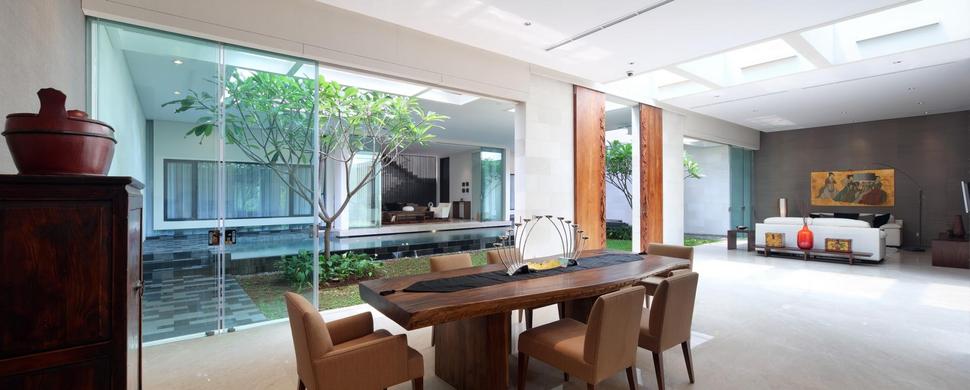
The residence’s principal eating area is a long table formed from dark-stained, solid pieces of a tree, creating a corner between the kitchen and a four-person living room. While the center of this combination room uses white and cream colors to enhance the flow from the front of the house to the rear, its edges are done in grey tones to lend an individual personality to the space.


By night, various lighting solutions built into the interior become apparent. In combination with traditional spotlights, the home’s skylights and a set of bulbs projected through the water in the courtyard provide unique ambiance.

All the wood panels inside are exquisitely detailed, with carvings made to resemble plant life and other natural scenes.
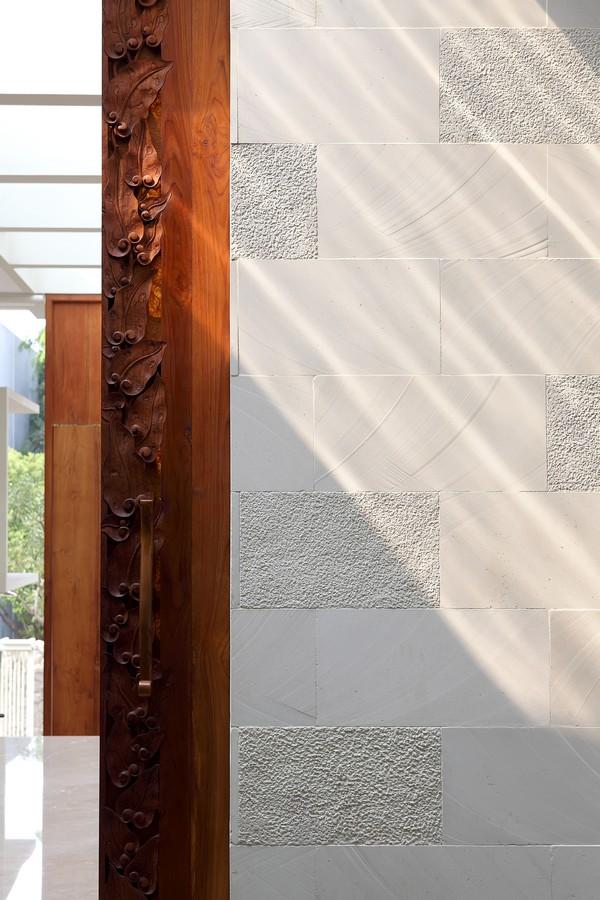
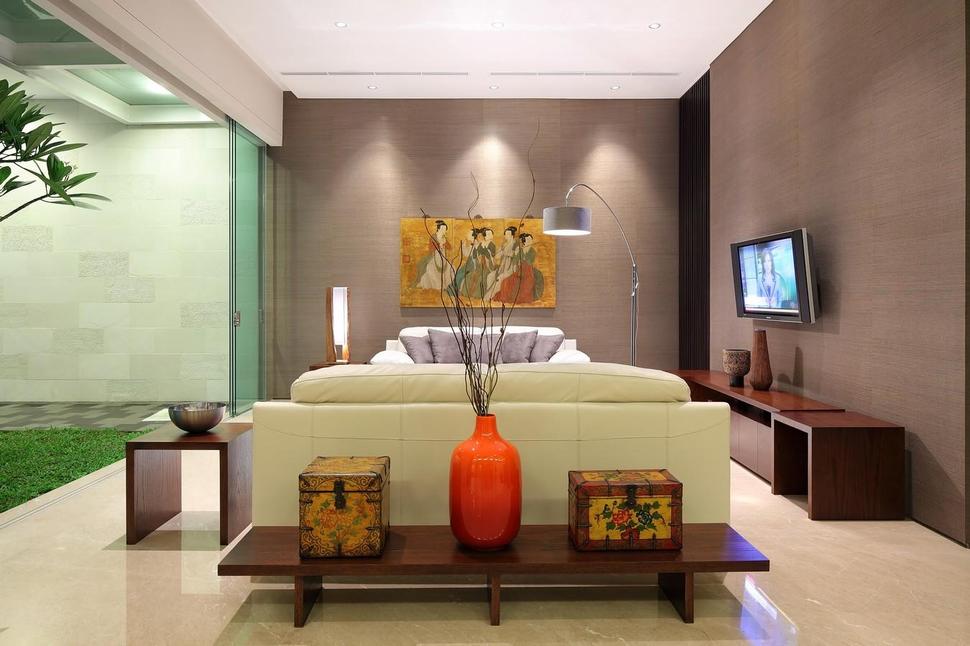
The set of glass panels separating the living area from the courtyard can be slid discreetly to one side on demand, creating a space with direct access to a lawn as well as all the modern convenience of a room for watching television and socializing.
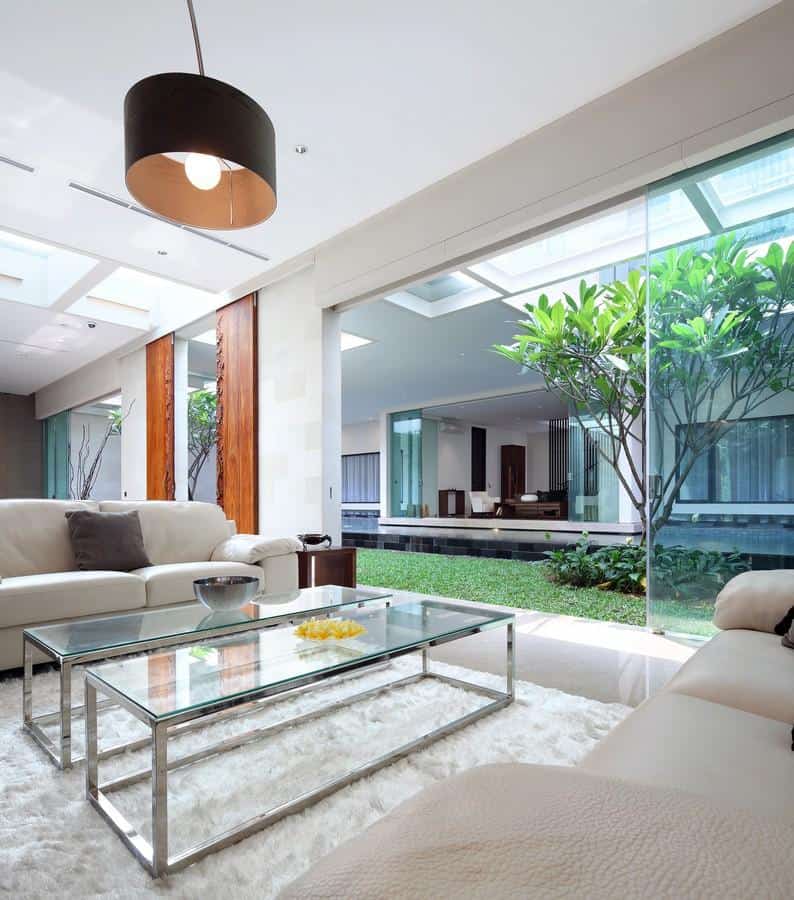
A carpet sized perfectly for the living space helps condense its furniture, giving a more personal atmosphere to that section of the open-format front rooms.
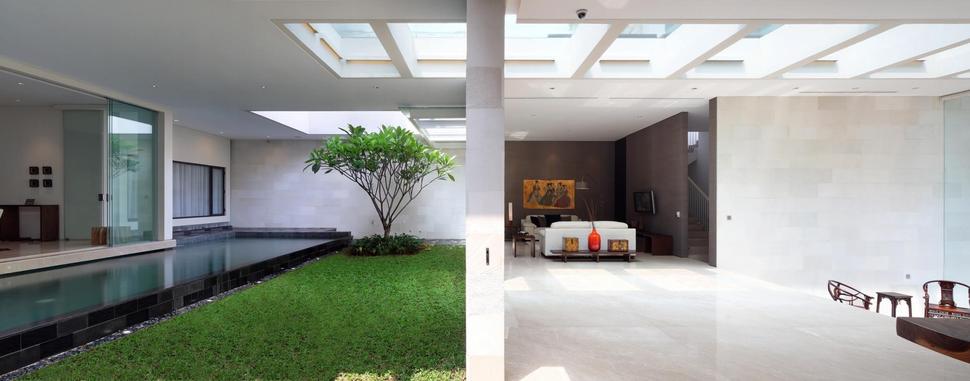
A grassy area (complete with a mirrored set of trees) and an elevated reflecting pool form a second lawn of sorts in front of the master rooms of the residence.
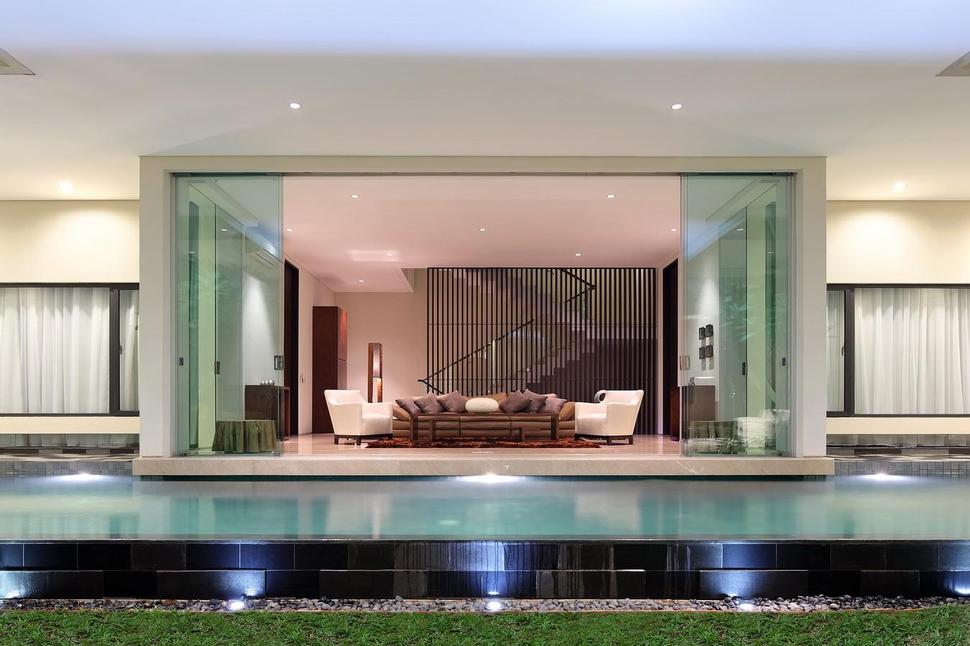
The largest room in the house dedicated to a single purpose, this spacious living room has a front wall of sliding glass panels and is only accessed from pathways at either side. This gives it a constant direct sightline out to the very front of the home, allowing homeowners to survey anything happening on the main floor.
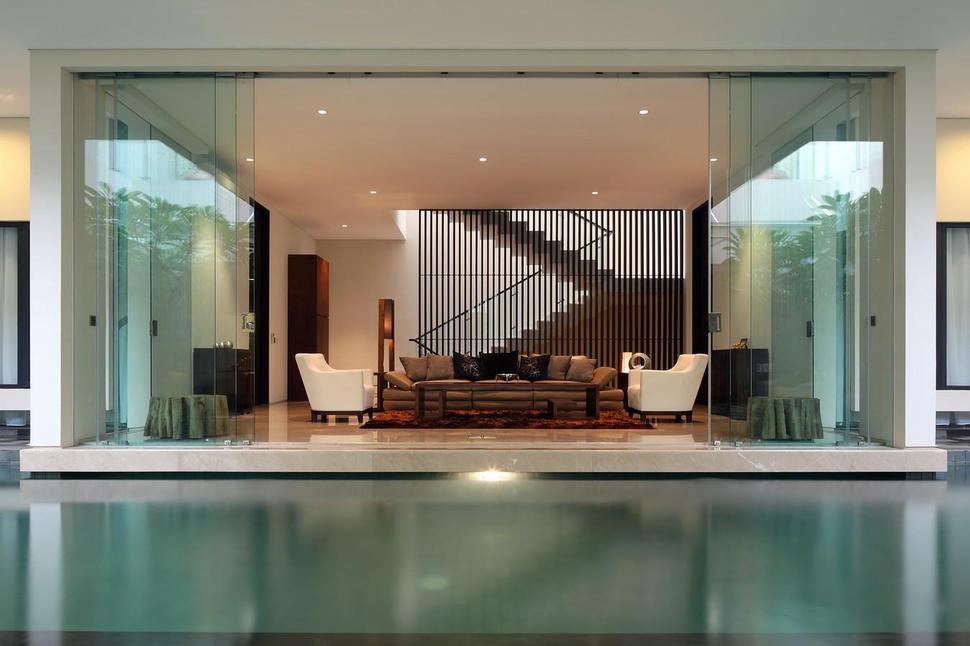
A semi-shielded staircase at the very rear of the home leads directly into the master suite in two elegant flights, breaking the almost perfect symmetry of the architecture.
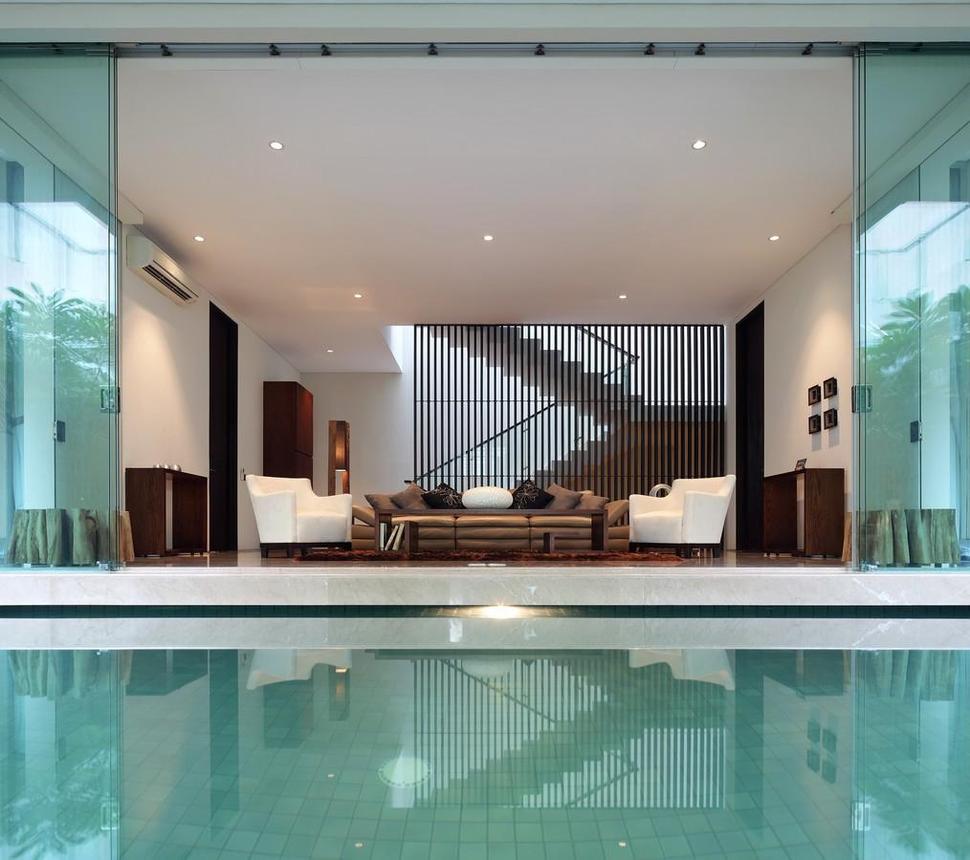
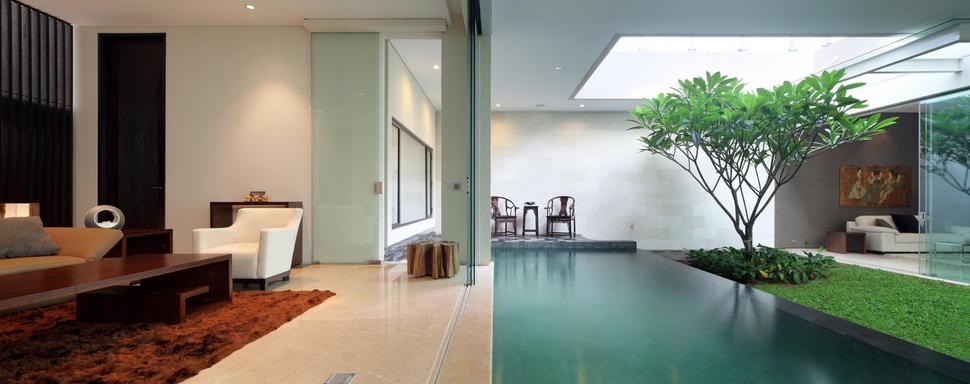
Each corner of the of the courtyard room has a square space that can be used to relax and contemplate the reflecting pool on the path between the public and private living spaces of the house.

Each edge of the courtyard gives a direct view upward to the top floor, which is arranged in a uniquely outdoor fashion, and beyond to the sky.
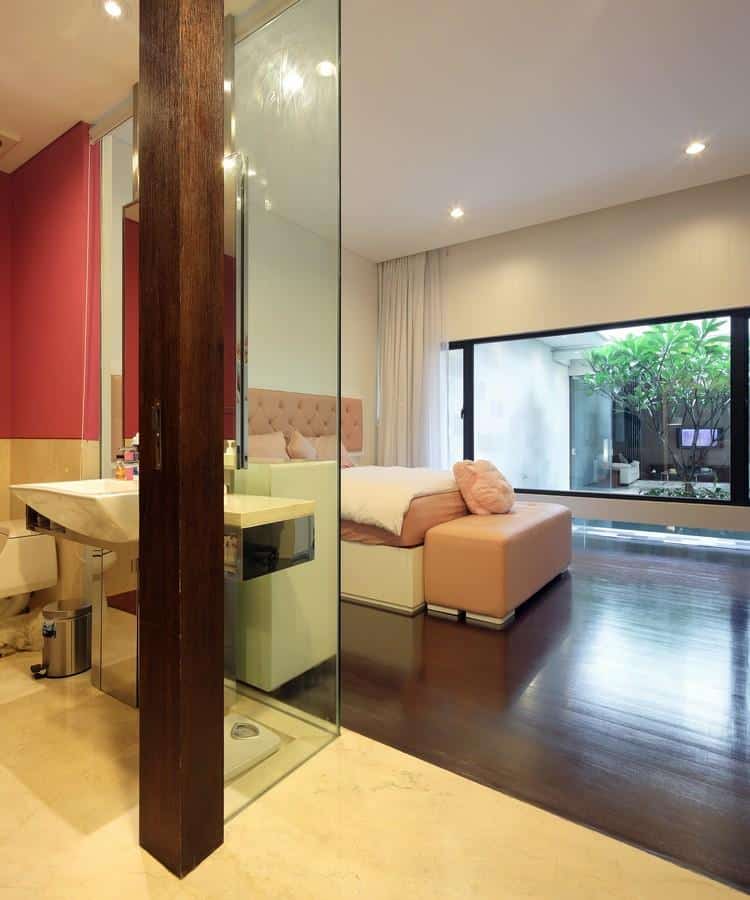
A child’s bedroom occupies the space on one side of the master living room on the main floor, but it is accessed from within that living room to preserve the relative isolation of the space. Still, a large bank of windows provides a view of the scenic indoor courtyard.

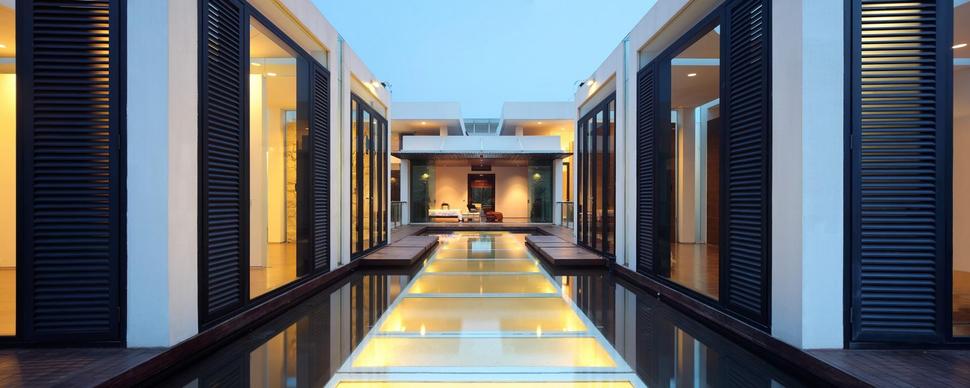
The top floor, containing a commanding master suite and guest bedrooms, is arranged around outdoor transit zones instead of traditional hallways. Reflecting pools all over the level make bridges out of each outdoor hall, with wooden steps up into each room.
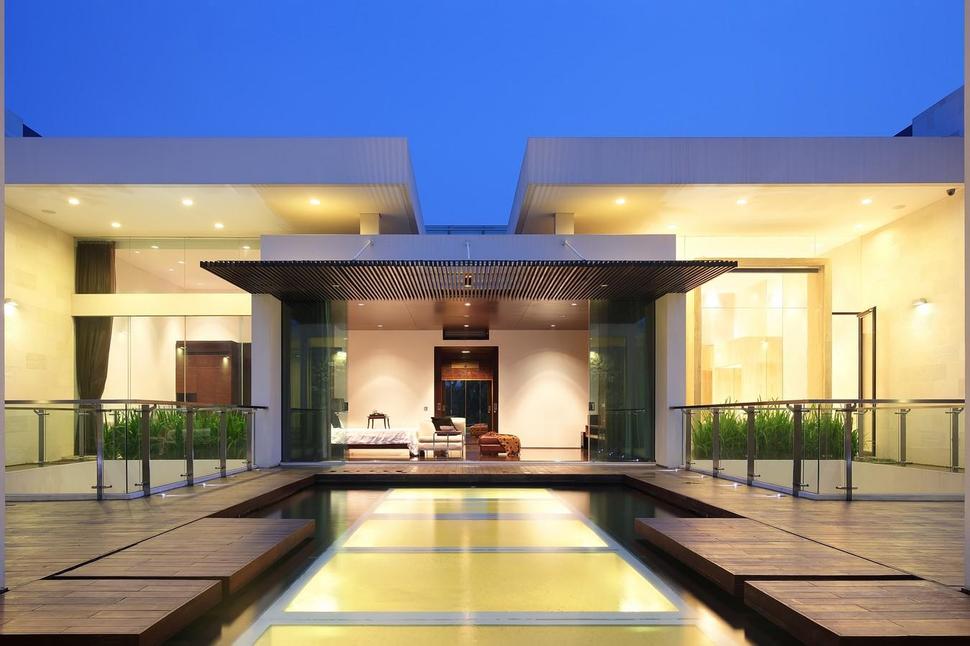
At the rear of the home, a set of three rooms makes up the sleeping, dressing, and bathing quarters of its owners. Despite the prevalence of glass walls, the rooms retain their privacy due to their location in the house, with no direct sightline from any other rooms.
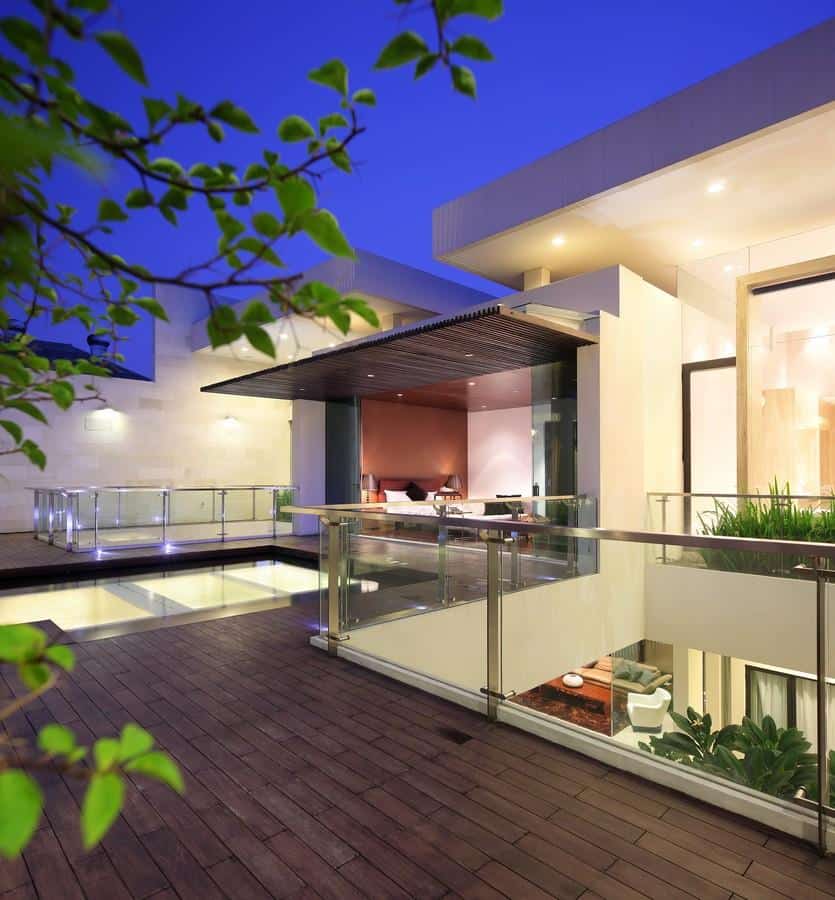
Unlike the skylights over the front rooms of the main floor, the openings into the courtyard are completely uncovered, requiring railings on the top floor for safety.

An additional intentional set of asymmetrical points are introduced in the central room here, the master bedroom. Both the roof of the room and the bed inside are oriented sideways, adding personality to the space instead of relying on strict layout rules.
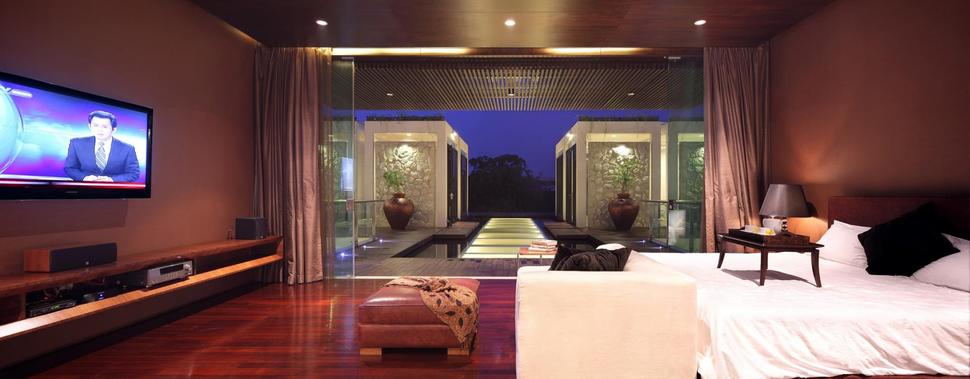
The bedroom itself is the single darkest room of the entire residence, with red walls and dark wood floors and ceilings. Only few coverings, such as the bedspread, are lighter than the walls.

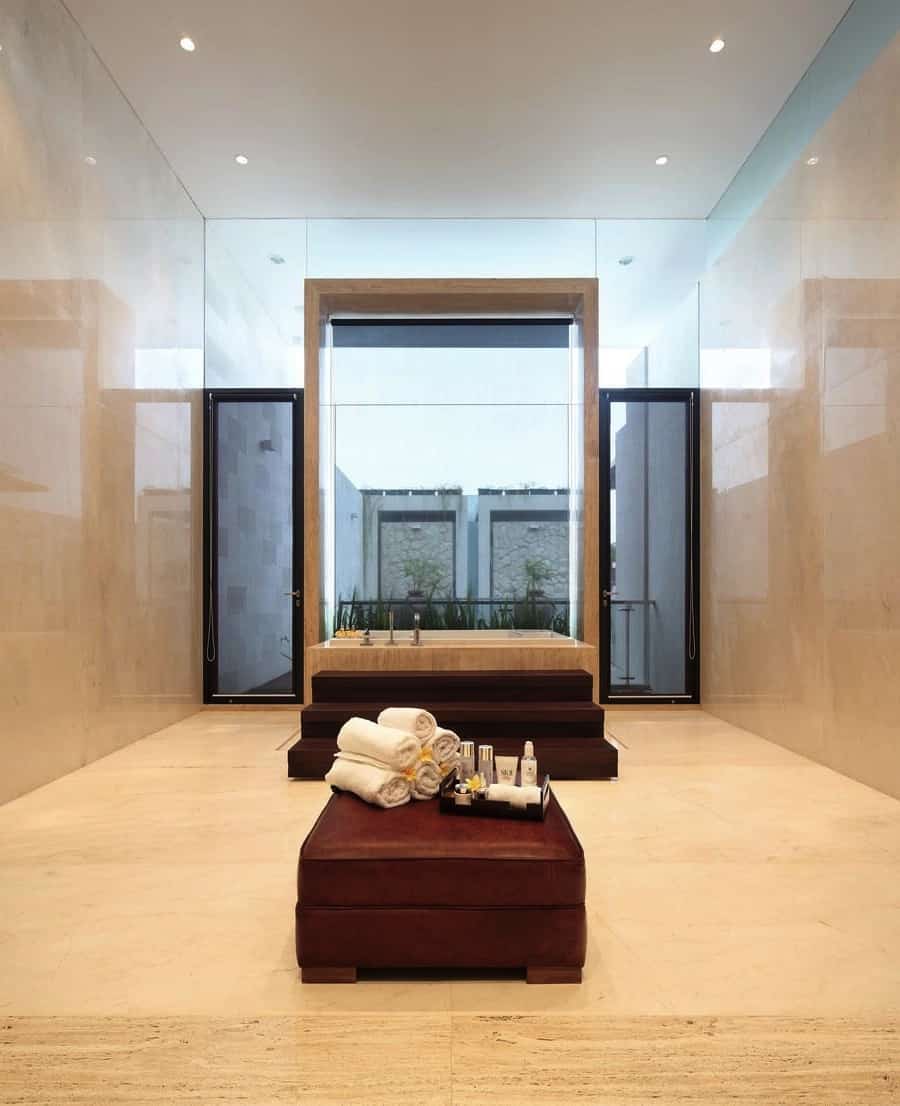
The home’s bathroom, set in the tallest volume of the residence, is arranged to create a monumental visual impact to its luxurious tub.

Anybody using the bathtub can easily see out onto the upper deck of the home and beyond, but a layer of plant life and the arrangement of spaces on top prevent others from seeing in.
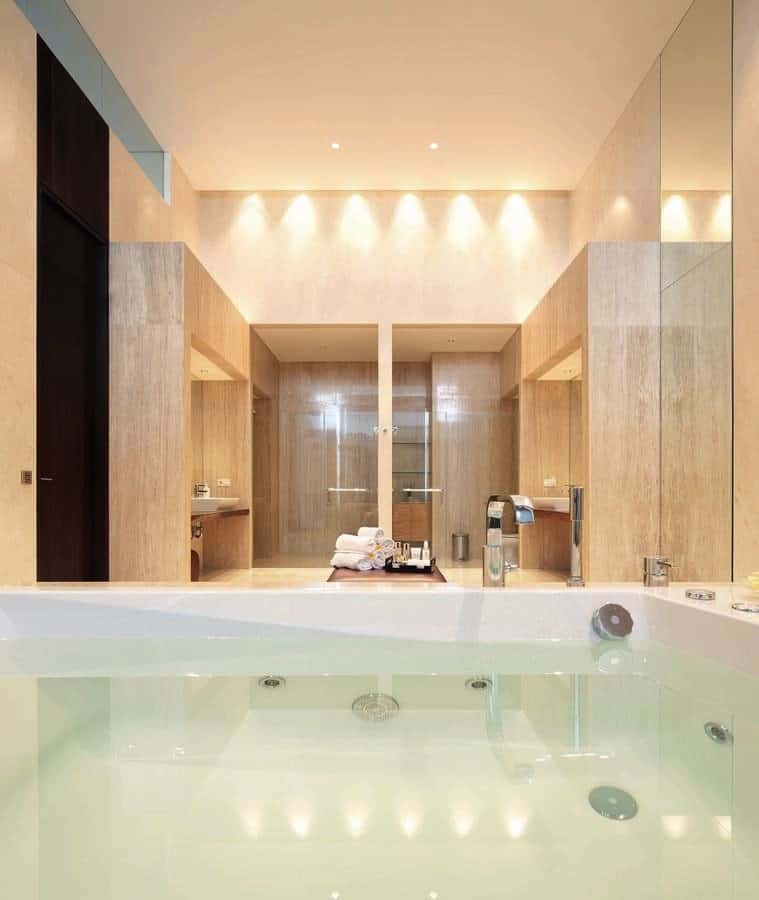
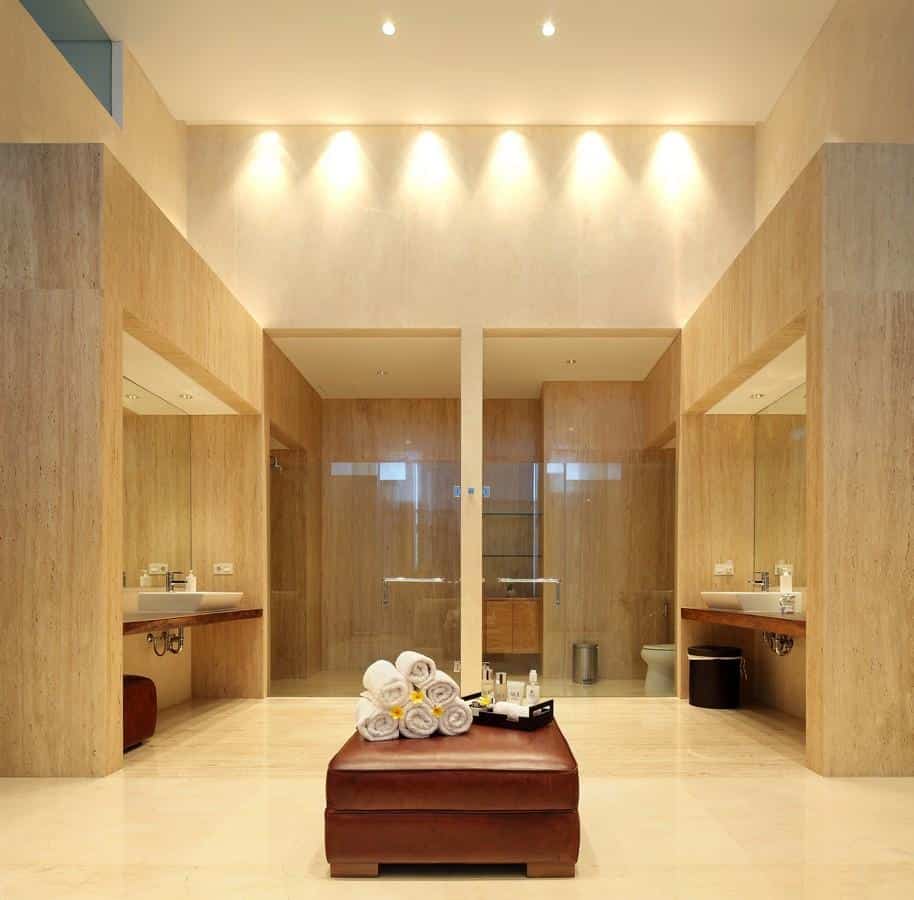
At the other edge of the bathroom, a mirrored arrangement provides an individual area for each homeowner, and the shower and toilet are kept out of the way behind it all.
Tonny Wirawan Suriajaja & Partners


































